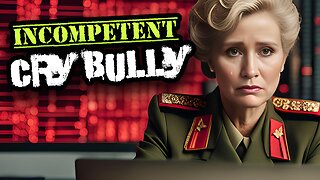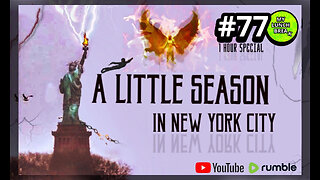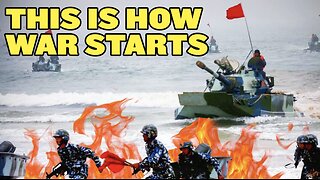We need systematic packaging at supermarkets. Block chain and QR codes.
Concept: replace all supermarket packages and unpackaged goods with systematic renewable and reusable and biodegradable packaging. Goal to eliminate all plastic packaging and disposable plastic supermarket goods within five years order to prevent plastic from entering the global ecosystem.
This would require a standard for renewable reusable stackable glass jar and bottle packaging and reformulation of some products to eliminate plastic components and packaging.
Glass packaging would have to be designed with automation of cleaning and filling as a priority. The jars may need to be produced with keyways to align them in machines so that labels and lids can be applied. Glass packaging design should not be done by committee, but by a group of companies that designs machines for cleaning and filling jars and for ease of stacking and safe transport.
Almost all liquids that come in plastic bottles could be in standard reusable glass bottles. Hand wash, soap, detergent, cleaners could be packaged in glass bottles different in design to food grade glass bottles.
Large diameter openings can be designed to allow for proper fast cleaning.
A range of standard design sizes can be made to make automated cleaning and filling rapid and lower costs.
Some reusable packaging can be designed for customers to refill their bottles and jars in store where hygiene is not a problem, eg some detergent liquid and bulk liquids like vinegar.
Some supermarkets could clean and refill jars in store. This could be used for over the counter deli products. This will help reduce bulk weight of jar transport.
Reusable system of box packaging for carriage of glass jars may be needed. A crate can be used by customers to shop for items that come in glass bottles and jars, and they can slot into a crate to hold them safely. This will need standardisation of diameter sizes. (Metal food cans already come in such standardised sizes).
A deposit and repayment scheme of returning washed bottles to the supermarket can ensure the bottles are properly reused. But also the glass bottles can be cheap enough to be considered disposable, however packaging can be returned for reward. This will mean that recycling as a service is self funding. (This proposal will eliminate most glass recycling by replacing it with reusables).
There would be design differences for food jars and bottles and chemical jars and bottles. Legislation my be required to make it an offence to put chemicals into standardised food containers. However the glass can have embossed writing and symbols for international use to avoid confusion, possibly embedded RFID or QR codes in glass.
Labels for glass packaging ought to be removed by dissolving ing in water, so that they wash off easily. It I possible that a coded jar or bottle has no labels at all, but can be looked up with a QR scanner or RFID scanner. The idea is to have a fully systematic approach to supermarket packaging.
The lids for bottles and jars would also have to not contain plastic. Many steel and aluminium lids have seals in them. I don’t know enough about this.
Most products should be reformulated as dry formulations so that they can be packaged in paper, waxed paper and card board boxes for design and advertising purposes.
Products that come as liquids, where a dry version is available ought to be changed to dry versions: liquid soap -
soap powder.
Some products that come as liquids, eg soup, could be frozen into portions and the portions could be packaged in to boxes and sold frozen.
Frozen items can still be frozen in grease proof paper packaging, eg free flow frozen vegetables, ice cream on a stick. Frozen meat products can be sold in waxed paper board boxes.
It is conceivable that some products could not be packed in any renewable method. These production should be conceded as non renewable, obsolete and not sustainable.
Soap into bars into paper
Yoghurt into jars,
Margarine into foil or paper like a block of butter.
Meat into foil and card board
Fresh meat and fish into waxed/ greaseproof paper.
Make liquid goods into dry goods, soap liquid into powder. Every product that can be
Toothbrushes into paper and card board the tooth brush an be wood, bamboo or PLA.
Shrink wrapped PLA can be used for some products that may need to be sealed like cheese.
Disposable items to be made from PLA plastic
Bread bags PLA or waxed paper
Cotton or hemp bags can be use for some dry goods.
Cellophane can be used, as it already is, for dry packaging where a window is wanted.
Pasta and rice can be in paper bags
Some products can be reformulated into powders, toothpaste for example.
-
 16:31
16:31
GeekyNerdyTechy
1 day agoZHIYUN Fiveray M20C Combo Light Review & Tutorial
11.9K5 -
 8:29
8:29
ParisDemers
20 hours agoThe Kratos/God Of War Workout Program (His Real-Life Training)
11.8K3 -
 16:14
16:14
CarlCrusher
15 hours agoSkinwalker's Evil Twin - Beyond Skinwalker Ranch Behind the Scenes Season 1 ep 2
13.5K2 -
 58:35
58:35
Crime Circus
21 hours agoMackenzie Shirilla KlDNAPPED!! True Crime Documentary!
16.3K6 -
 12:00
12:00
DepressedGinger
12 hours agoLibs *MELTDOWN* as Biden sh*ts himself again...
8.9K10 -
 8:03
8:03
Bearing
18 hours agoE-Safety Karen INVENTS Elon Musk HARASSMENT While LEAKING Private Details!
17.2K73 -
 17:16
17:16
Clownfish TV
23 hours agoMedia Melting Down Over Mainstream Media Meltdown...
38.7K56 -
 1:11
1:11
Gamazda
16 hours agoFlight of the Bumblebee - Rimsky-Korsakov
42.5K48 -
 1:00:21
1:00:21
MYLUNCHBREAK CHANNEL PAGE
17 hours agoA Little Season in New York City
58.8K64 -
 11:56
11:56
China Uncensored
18 hours agoThe Philippines Threaten War with China
51.2K38